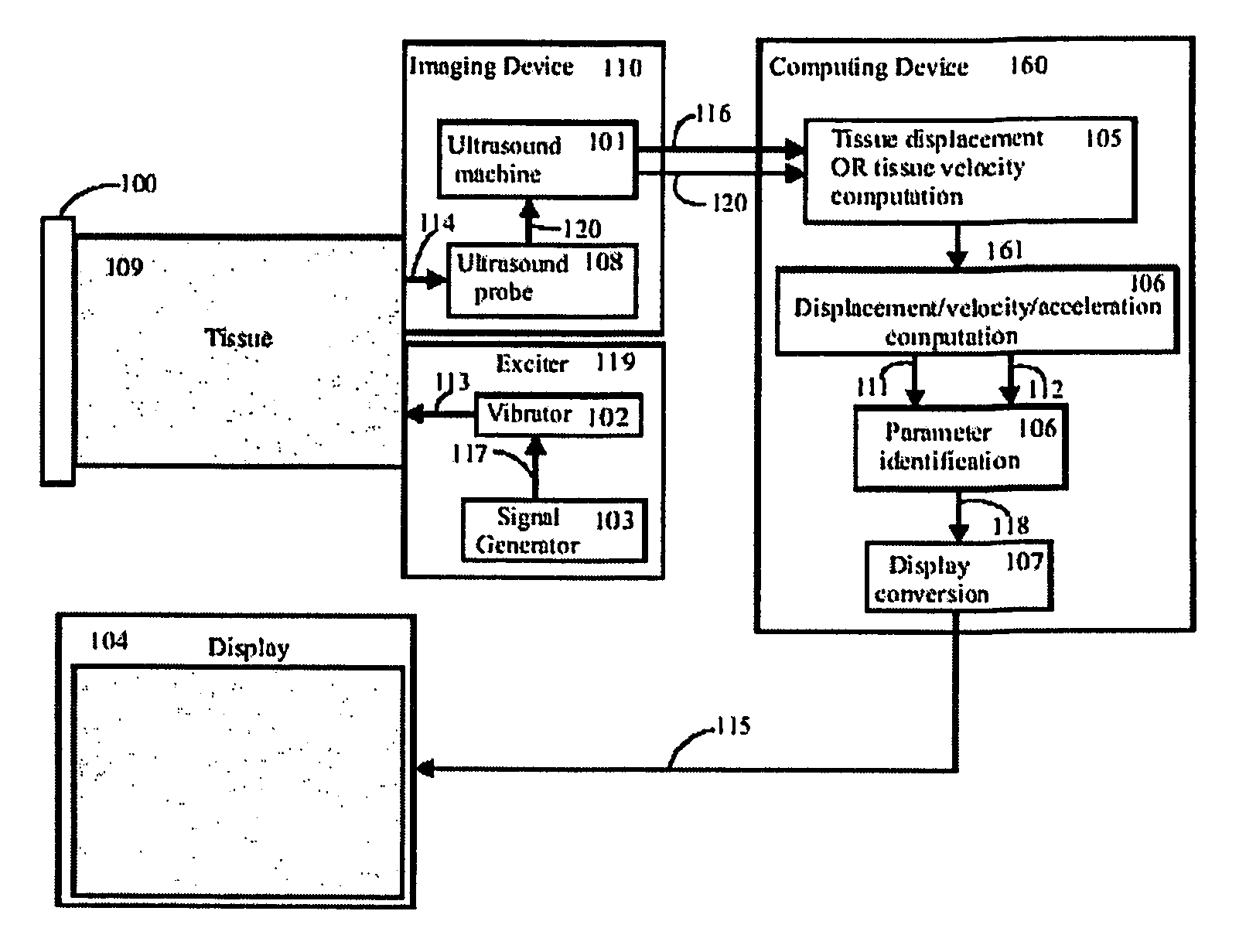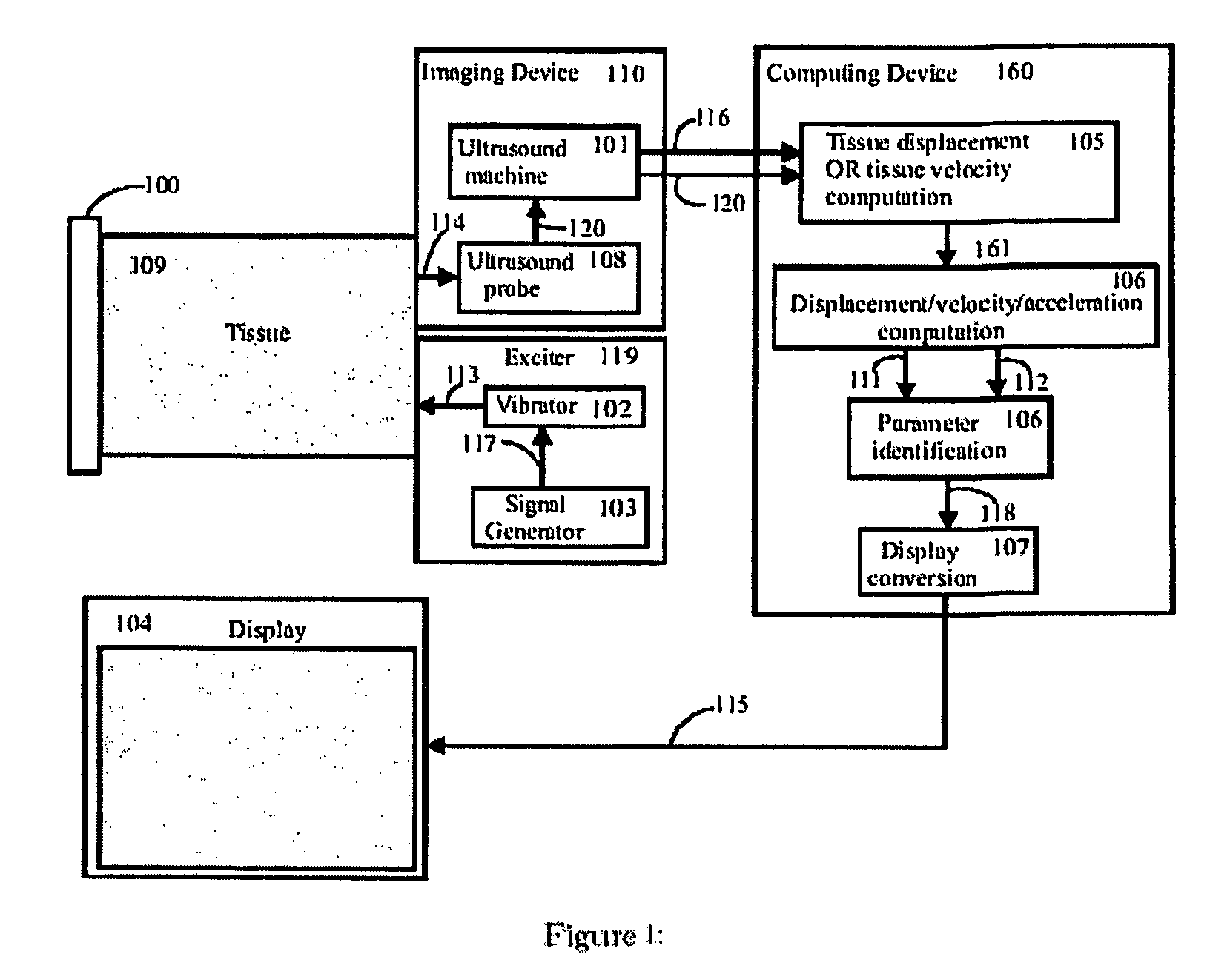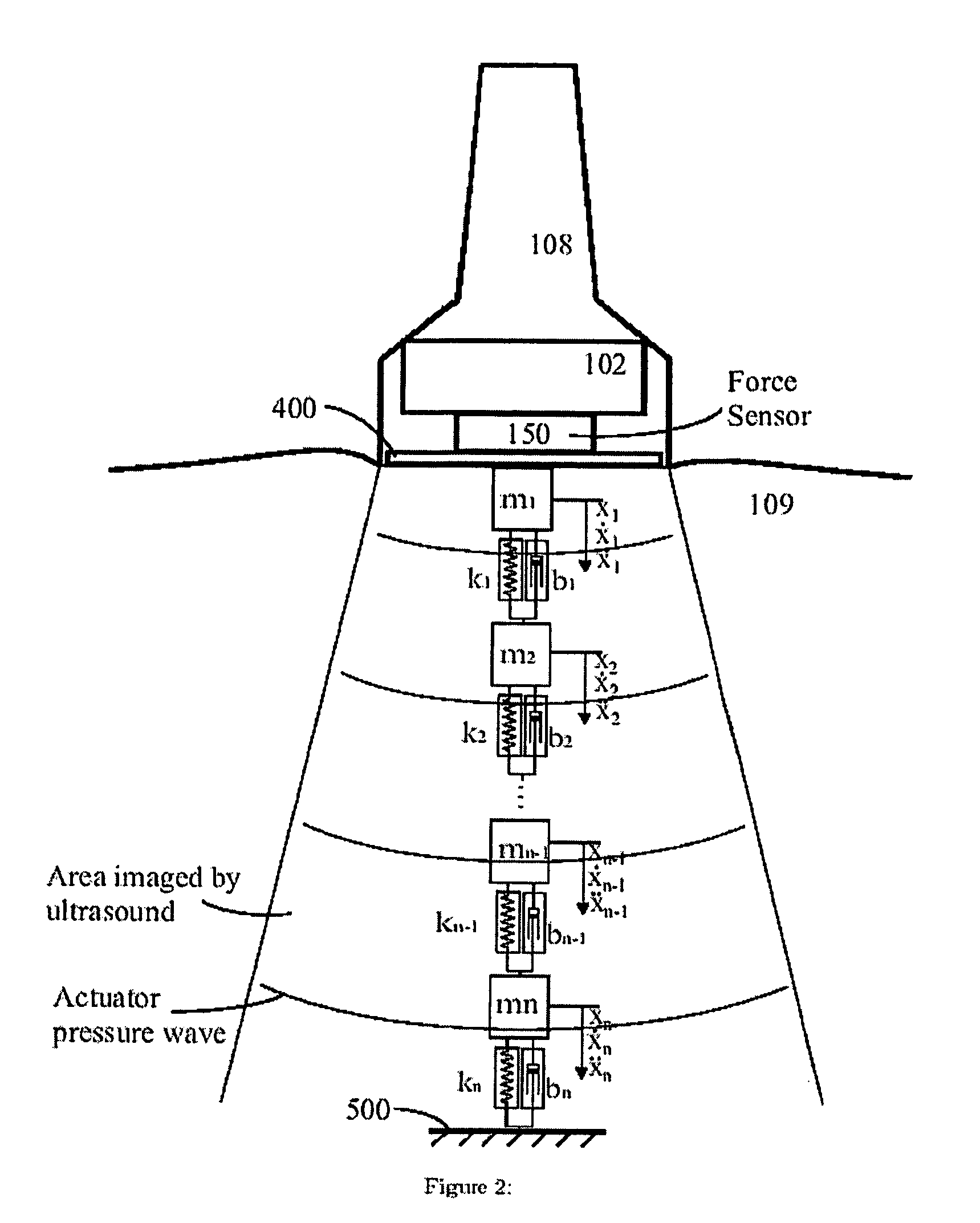Method for imaging the mechanical properties of tissue
a mechanical property and tissue technology, applied in the field of diagnostic imaging, can solve the problems of only measuring static properties of tissue, elastography methods, and method is sensitive to noise and measurement bias, and achieve the effect of reliable results
- Summary
- Abstract
- Description
- Claims
- Application Information
AI Technical Summary
Benefits of technology
Problems solved by technology
Method used
Image
Examples
Embodiment Construction
[0062]The following description describes an apparatus and method of imaging the properties of human or animal tissue.
Overview of the Approach
[0063]An embodiment of the present invention is shown in FIG. 1. Broadly, the system has an exciter 119 to create mechanical waves in the tissue, an imaging system 110 to capture tissue displacements and / or velocities from the wave motion, a computing device 160 that calculates tissue viscoelastic parameters from the captured tissue displacements and / or velocities, and a display 104 for displaying information based on the resulting set of parameters.
[0064]The viscoelastic parameters that are computed by 160 are derived by considering specific models of the tissue being excited. The use of an appropriate model of the tissue, together with the identification of the parameters of this model, makes this new imaging approach extremely effective.
[0065]As shown in FIG. 2 and FIG. 3, the computing block 160 makes use of a tissue model that includes a ...
PUM
 Login to View More
Login to View More Abstract
Description
Claims
Application Information
 Login to View More
Login to View More - R&D
- Intellectual Property
- Life Sciences
- Materials
- Tech Scout
- Unparalleled Data Quality
- Higher Quality Content
- 60% Fewer Hallucinations
Browse by: Latest US Patents, China's latest patents, Technical Efficacy Thesaurus, Application Domain, Technology Topic, Popular Technical Reports.
© 2025 PatSnap. All rights reserved.Legal|Privacy policy|Modern Slavery Act Transparency Statement|Sitemap|About US| Contact US: help@patsnap.com



